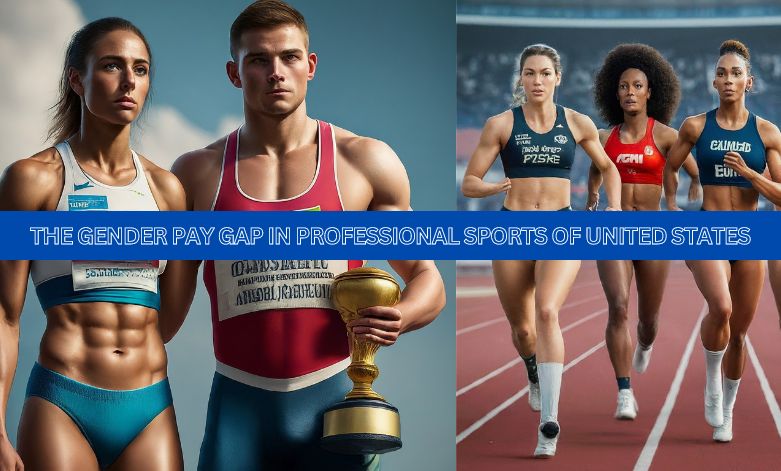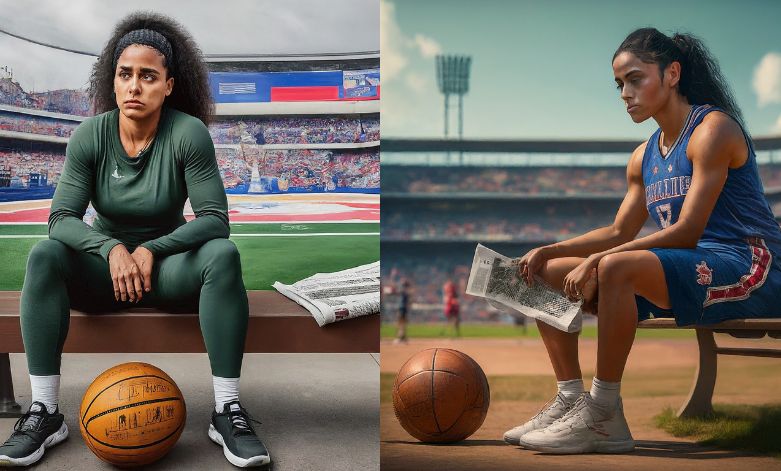The Gender Pay Gap in Professional Sports of the United States

The roar of the crowd, the thrill of victory, the dedication of athletes; sports hold a unique place in the United States’ culture. They foster community, ignite national pride, and inspire individual achievement. Yet, beneath the surface lies a persistent inequality that undermines this very spirit: the gender pay gap in professional sports. This article delves into the complex nuances of this issue, its impact on athletes, and the ongoing fight for fairness within the American sports culture.
Table of Contents
Sports Culture in the United States: A Tapestry of Passions
Sports in the United States are more than just games; they’re deeply woven into the fabric of our society. From backyard baseball games to packed stadiums, athletics provide shared experiences that transcend age, race, and background. They teach important values like teamwork, perseverance, and respect, shaping communities and forging lifelong bonds. However, this seemingly inclusive environment harbours a stark dissonance when it comes to gender equality.
The Gender Pay Gap in Professional Sports: Beyond the Scoreboard
While millions tune in to cheer for their favourite teams, a glaring disparity exists in how male and female athletes are compensated. The gender pay gap in US sports is stark, with female athletes earning significantly less than their male counterparts. A 2020 study by the Institute for Diversity and Ethics in Sport revealed that, on average, female athletes earn only 18% of what their male counterparts do. This disparity manifests across various sports, with some of the most glaring examples:
- Basketball: NBA players make an average of $7.3 million annually, while WNBA players average a mere $130,000.
- Soccer: While a landmark achievement in 2022 saw equal pay for both men’s and women’s national teams, disparities persist in club-level professional leagues.
- Tennis: Grand Slam prize money is now equal, but female players face fewer tournament opportunities and endorsement deals, limiting their overall earnings.
These gaps extend beyond salaries, impacting sponsorship opportunities, media coverage, and overall visibility. This limited exposure translates to smaller fan bases, lower ticket sales, and ultimately, decreased revenue for women’s leagues, which is often used to justify the pay gap.
Consequences of the Gender Pay Gap in United States Sports

The gender pay gap in US sports isn’t merely a financial disparity; it has significant ramifications that extend far beyond individual wallets. It impacts athletes’ personal and professional lives, perpetuates harmful stereotypes, and hinders the overall growth and inclusivity of sports culture in the United States. Let’s explore some of the key consequences:
1. Impact on Athletes:
Financial strain: Lower salaries limit athletes’ ability to invest in training, recovery, and quality equipment, impacting their performance and long-term career potential.
Limited career security: Financial instability restricts their ability to plan for retirement and healthcare, leading to anxieties about their future well-being.
Psychological effects: The perception of being undervalued can affect athletes’ confidence and motivation, hindering their mental well-being and performance.
2. Perpetuation of Stereotypes:
Reinforced beliefs: The pay gap reinforces the inaccurate notion that male athletes are naturally more valuable or skilled than their female counterparts.
Discouragement of young girls: Seeing the disparity can discourage young girls from pursuing athletic careers, perpetuating the underrepresentation of women in sports.
Negative media narratives: Biased media coverage often focuses on female athletes’ physical appearance or personal lives, overshadowing their athletic achievements and contributing to unfair stereotypes.
3. Hindered Growth of Women’s Sports:
Limited investment: Lower revenue due to smaller fan bases and sponsorships restricts investment in infrastructure, development programs, and marketing for women’s leagues.
Reduced accessibility: Lack of resources and funding limits opportunities for young girls and women to participate in and excel in sports.
Unfulfilled potential: The pay gap restricts the talent pool and hinders the overall growth and competitiveness of women’s professional leagues.
These consequences underscore the urgent need for change within the sports culture of the US. Recognizing the impact of the gender pay gap is crucial to creating a level playing field where all athletes, regardless of gender, can thrive.
The sports culture in the US must move beyond justifications and delve into the root of this disparity. It’s not just about numbers; it’s about recognizing the systemic biases, cultural norms, and historical inequalities that contribute to this unfair reality.
Also Read:
